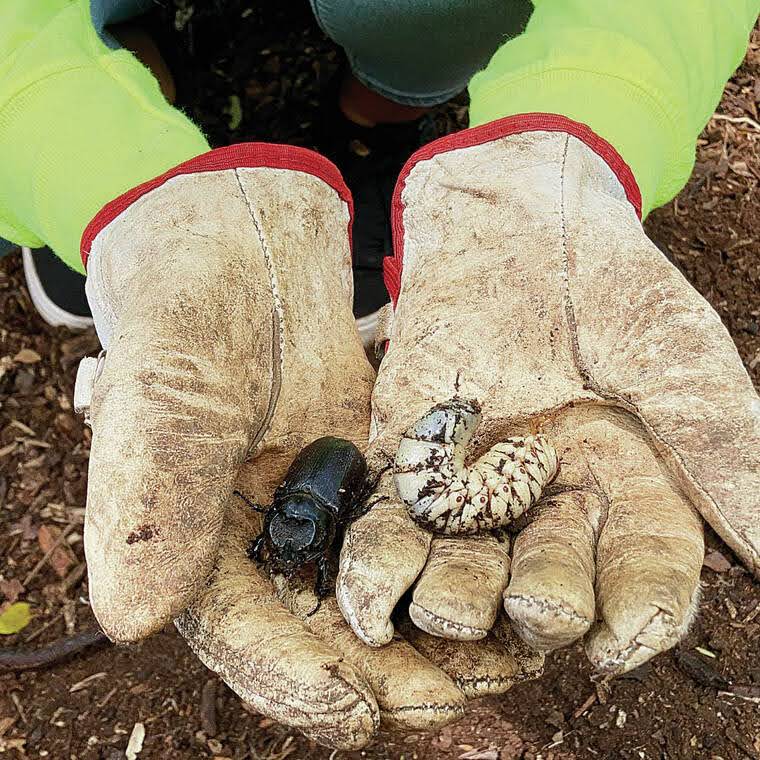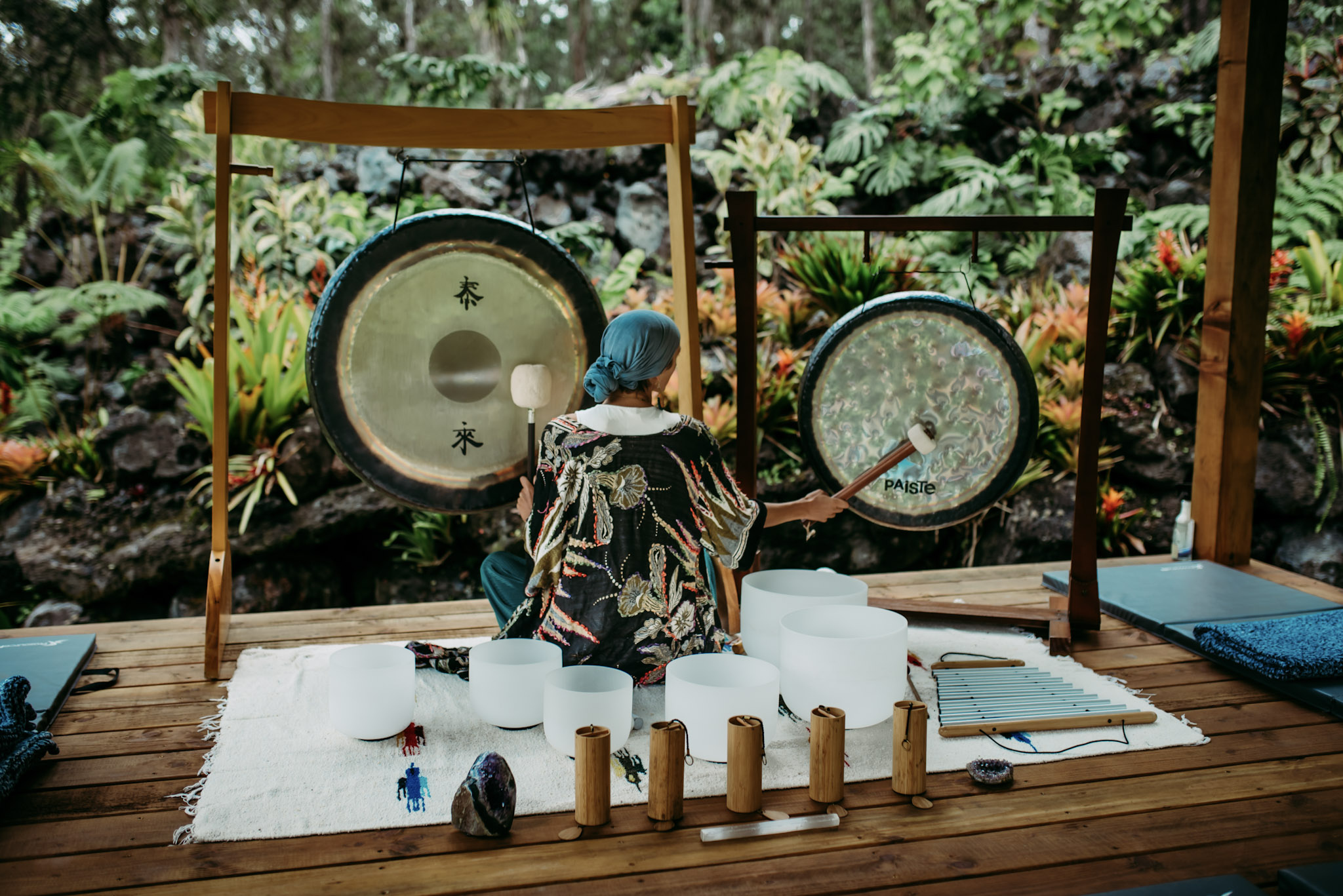Until recently, palms in Hawaii have had relatively few serious insect and disease problems. Unlike Florida and the Caribbean, we dodged the bullet of Lethal Yellowing. That disease destroyed most coconut palms in the region during the 20th century.
The key to avoiding Lethal Yellowing here was to have strict rules and penalties against importing palms from affected areas. Inspection of incoming plants by the Hawaii Department of Agriculture and USDA plus support of the University of Hawaii College of Tropical and the Hawaii Landscape Industry, we have avoided many other diseases and insect pests.
Unfortunately, we are now threatened with a new problem that could devastate our environment. The coconut rhinoceros beetle can kill not only coconut palms but many other species as well. This includes our very rare endemic Pritchardia palms that evolved here.
This large horny beetle has now been found on Hawaii Island and can easily be spread by humans. For example, green waste containing the larvae or adults is often composted and used as mulch by local gardeners. At this point, we have to be careful to inspect mulch, compost and any palms we transport. The beetle can also attack sugar cane and Pandanus or Hala species. The beetle is about two inches in size. The larvae can be up to four inches long before pupating. When they first attack the bud of a palm, the new leaves emerge damaged. If you think you have found affected palms, beetles or larvae go to crbhawaii.org to report the sighting and for further information.
Why is this so important? When we think of the tropics, the first trees that come to mind are coconut palms gracing white coral sand beaches. Truly, these palms have been carried by humans throughout the tropical world over thousands of years. Taxonomists, botanists and anthropologists have attempted to discover the origin of this valuable tree, but none are sure. One theory is that the specie evolved in the Australasian region hundreds of thousands of years ago since some of the earliest records are indicative. They may even have evolved when the interior of Australia was ocean.
At any rate, the coconut palm is one of our favorite trees for landscape purposes, food and shelter. There are hundreds of other palm species worldwide, most in the tropical and subtropical regions. Some thrive in desert environment and some thrive in moist rainforest zones. However, some may be found in cold mountainous locations like the Andes and Himalayas. Some of these may be grown as far north as Seattle Washington.
Hawaiian gardens include hundreds of species of rare palms. When it comes to species of palms in the world, there are hundreds with more discovered each year. They come from the high mountains like the Andean Wax Palms that live at 13,000 feet above sea level to equatorial rainforest species like those from the Amazon. Desert palms are another large group, but none is quite so close to our Hawaiian hearts as the coconut palm. The coconut palm group is composed of scores of varieties including some dwarf types that should be used more in Hawaii. Not only are they shorter and easy to harvest, they are resistant to the devastating disease of Lethal Yellowing.
Palms here have had relatively few serious pests or diseases until now.
Hawaii’s palms may be affected by bud rot or stem bleeding disease that is often caused by physical damage such as unsanitary pruning equipment or climbing spikes.
Most palms showing yellow or stunted growth have been found to be suffering from lack of fertilizer or water. All these problems are correctable, but if lethal yellowing ever gets to Hawaii or if the coconut rhinoceros beetle becomes widespread, there’s no practical way of stopping destruction of our island’s palms.
When Lethal Yellowing hit the mainland of Florida, it was discovered that many other palms species were also susceptible to the disease in varying degrees. Florida embarked on a two stage program to replant. Over half a million dwarf coconuts were imported.
The dwarf, while highly resistant to the disease also had the added benefit of easily harvested nuts and did not require expensive nut and leaf removal as with the tall varieties.
Hawaii is fortunate to be far from disease affected regions, so it is vital that we do not introduce this and other plant plagues. When it comes to the coconut rhinoceros beetle, we need to support research efforts like bio control and pesticide management to contain this insect. We are fortunate to have several nurseries like Suchin and Jeff Marcus’s Floribunda that have collected palms seed from all over the world for our parks and gardens, but Jeff and Suchin are alerting us that we must not delay or it will be too late to avert mass losses of palms.
It is important to be alert and cooperate with the Hawaii and Federal Departments of Agriculture to follow all the rules of inspection to keep our palms free of disease and insect pests.








